
The launch of the Samsung Galaxy S10 is just a couple of days away and despite of the rumors going around the ‘net, we’re still very much excited about its announcement. I don’t really consider myself a Galaxy S fan, but I did own a few of them that started with the Galaxy S3, Galaxy S5, Galaxy S6 and the Galaxy S7. I’m not using a Galaxy S9, but I moved on to the Note series with my Galaxy Note9. As the Galaxy S series reached its 10th version, let’s go to a time machine and reminisce how Samsung made their high-end smartphone line successful and become the Number 1 phone brand in the world, if not the Galaxy.
SAMSUNG GALAXY S (i9000)
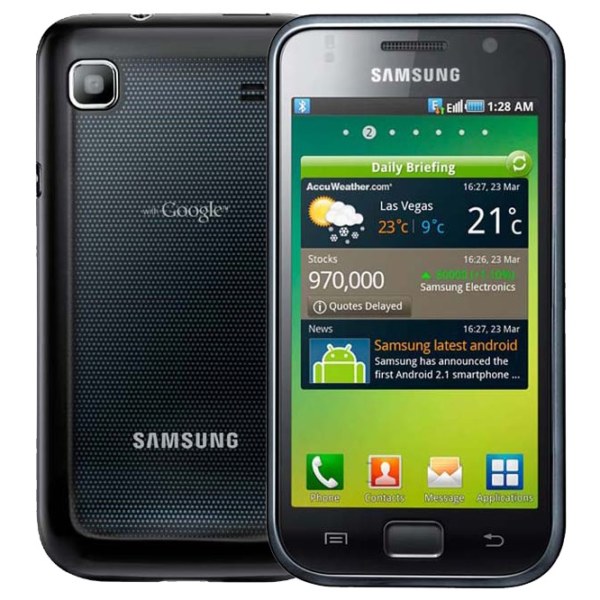
The one that started the series. The Samsung Galaxy S was slated to become the high-end smartphone of Samsung using the two year-old Android platform. To compete with other Android phones from Taiwanese Giant HTC and Sony Ericsson and Apple’s iPhone, Samsung equipped the Galaxy S with competitive specs. It had a 4-inch Super AMOLED display with 480×800 resolution, 1GHz processor, internal storage of 16GB and memory of 512MB. Main camera has 5 Megapixels while the front camera was only VGA! Battery capacity of the Galaxy S back then was only 1,500 mAh and the Android OS that came with the phones was on Android 2.1 a.k.a. Eclair. The SRP of the Samsung Galaxy S was P32,990.
SAMSUNG GALAXY S2 (i9100)
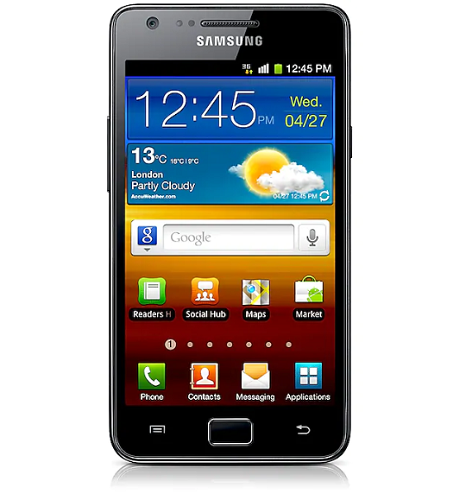
The first Galaxy S was successful enough to merit a second version. The Samsung Galaxy SII was announced in June 2011 with a few upgrades. The screen became bigger at 4.3-inches, powered by a dual-core processor, storage and memory were bumped up to 32GB and 1GB respectively. Camera was also upgraded to 8 Megapixels and while the front camera got 2 Megapixels. Battery had a capacity of 1,650 mAh. The Android OS released for the SII was 2.3.4 a.k.a. Gingerbread. The retail price of the Samsung Galaxy SII in 2011 was P29,990, slightly cheaper than its original release.
Samsung started their campaign with the Galaxy SII against the iPhone by posting this ad, which is still my favorite up to this day:
SAMSUNG GALAXY SIII (i9300)
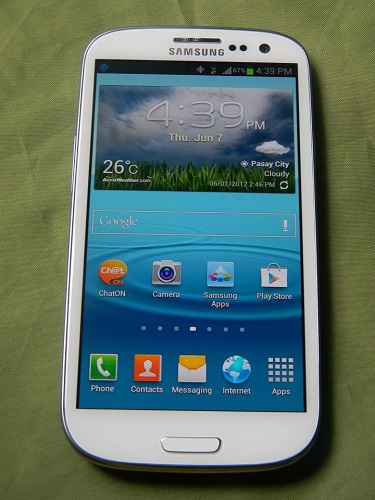
This was my first Samsung Galaxy S phone! I called it a “Superphone” in my review for the defunct tech-blog Technoodling.net (copy of my review can also be found here: https://digitalreg.net/samsung-galaxy-s-iii-review-the-superphone-has-arrived/) because it was one of the first Android phones to have a quad-core processor. This was the first time Samsung made some changes on its design by making the phone curvier, making it look more sexy. Some users were criticizing the phone for its plastic materials but even I was an iPhone user at that time, I never complained because the phone wasn’t cumbersome to hold. The Galaxy SIII became my standard for Android phones and only one other phone matched it in my opinion – the HTC One.
Samsung continued using the Exynos processor for their Asian market and at the same time upgrading the SIII’s screen to 4.8-inches with HD resolution, internal storage was bumped up to 64GB while retaining its 1GB RAM. Cameras continue to improve even by not updating its 8 Megapixels but the front camera was moved down a bit to 1.9 Megapixels. Battery capacity became bigger at 2,100 mAh and it was already pre-installed with Android 4.0 a.k.a. Ice Cream Sandwich. SRP was moved up again to P32,990 when it was released in June 2012.
Here’s another funny commercial of the Galaxy SIII against the iPhone:
SAMSUNG GALAXY S4 (i9500)
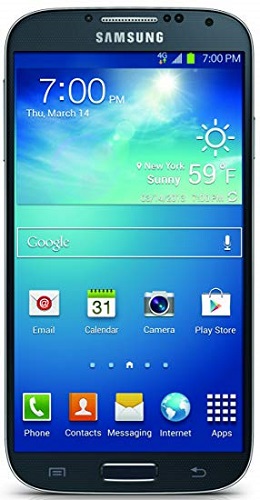
The Samsung Galaxy S4 was launched earlier by two months in 2014. It dropped the numerical sign in this series but managed to make some good upgrades. I never upgraded to this model, because personally, I found it boring. I stuck with my SIII until my daughter accidentally broke it.
The Galaxy S4 still has a plastic body that houses a 5-inch screen with Full HD resolution powered by an Octa-Core processor with 64GB of Internal Storage and 2GB of RAM. The main camera has a whopping 13 Megapixels while its front camera is back to 2 Megapixels. Battery also had a major upgrade to 2,600 mAh and the Android version that came with this phone was 4.2.2 a.k.a. JellyBean. The SRP of the Samsung Galaxy S4 in May 2013 was P30,990.
Here’s a TV ad of the Galaxy S4 showing its gimmicks to iPhone users:
SAMSUNG GALAXY S5

The announcement of the Samsung Galaxy S5 was moved again by two months to February, to the annual Mobile World Congress. I wasn’t really supposed to get this phone, but the unavailability of the Sony Experia Z3 made me go for the S5 instead.
The Samsung Galaxy S5 was the first Samsung phone to have dust/water resistance. Screen became bigger by .1″ (5.1-inches) with Full HD resolution. I was excited by the announcement of the S5 having a Qualcomm Snapdragon processor, only to find out Asian markets will STILL have the Exynos processor. BOO! Storage is 32GB and memory is still at 2GB. Main camera now has 16 Megapixels with HDR and can take photos underwater! If you want to take a selfie, you may do so with its 2 Megapixels camera. Battery had a capacity of 2,800 mAh. It was also the last Galaxy S phone to have a removable battery. Android 4.4 a.k.a. KitKat came with the phone. The SRP of the Samsung Galaxy S5 when it was released in April 2014 was P34,990.
Here’s a TV ad of the Samsung Galaxy S5:
SAMSUNG GALAXY S6

Samsung had a pretty rough year in 2014 and there were a lot of negative press about the Korean phone giant. The announcement of the Samsung Galaxy S6 changed all that. But wait, there’s more! Instead of announcing one phone model, they announced two this time! The Galaxy S6 Edge has curved edges (first seen in the Galaxy Note Edge) and it got more attention even from non-Samsung fans. I got the Samsung Galaxy S6 FE (Flatscreen Edition, heh!) and was happy with the redesign of the phone. It was made of metal and the back was covered with glass which makes it the most premium among Galaxy S phones. However, because of the redesign, the Galaxy S6 and S6 Edge are not water resistant. They also removed external storage too, which limits the apps and files stored on the phones. This model also announced the availability of dual-SIM for Asian markets.
The Galaxy S6 and S6 Edge both have 5.1″ screen displays with a Full HD+ (1440×2560) resolution. They both use an Exynos 7420 Quad-Core processor, storage options were at 32GB and 64GB and memory was finally upgraded to 3GB. Camera is still at 16 Megapixels but with an aperture of f/1.9 for low-light conditions. The aperture is also the same with its 5 Megapixel front camera. Battery of the S6 was 2,550 mAh while the S6 Edge was 2,600 mAh. Both batteries are now non-removable. The OS that came pre-installed with these phones was Android 5.0 a.k.a. Lollipop. The SRP during its release in the Philippines in April 2015 were:
Samsung Galaxy S6
- 32GB – P35,990
- 64GB – P41,990
Samsung Galaxy S6 Edge
- 32GB – P41,990
- 64GB – P47,990
Want to watch more Samsung Galaxy S TV ads? Here’s one for the Galaxy S6 with its wireless charging feature:
SAMSUNG GALAXY S7
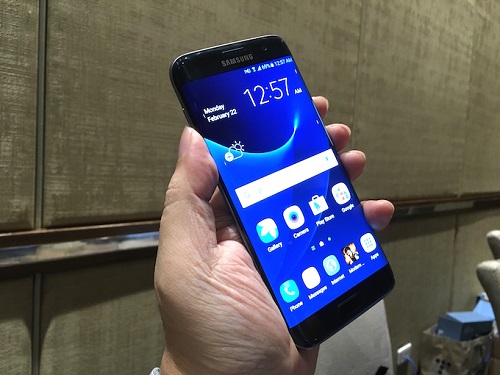
There weren’t much changes in the Samsung Galaxy S7 and S7 Edge, but the improvements they’ve made benefited the Galaxy S fans. They listened to the fans by bringing back expandable storage with capacity up to 200GB, battery capacity were bumped up to at least 3,000 mAh and they also made it water and dust resistant again. I got this last June of 2016, and was my last phone in the series. You can read my review of the Galaxy S7 here: https://digitalreg.net/samsung-galaxy-s7-review-galaxy-s6/
Screen size is similar to the Galaxy S6 but the phones are now using a Exynos 8890 Octa-Core processor. Storage is 32GB but expandable to 200GB with a MicroSD card. Memory is now bumped up to 4GB. Photos taken with the S7 were really good thanks to its 12 Megapixels camera with f/1.7 aperture and front camera was 5 Megapixels with f/1.7. The S7’s battery is rated at 3,000 mAh while the S7 Plus is 3,600 mAh. The Android version released with the phone was Anrdoid 6.0 a.k.a. Marshmallow. To avoid confusion among its SKUs, Samsung Philippines only released one variant per model. The SRP of the Samsung Galaxy S7 in April 2016 was P34,990 while the S7 Plus was P39,990.
Here’s a commercial of the Samsung Galaxy S7 Edge with VR:
SAMSUNG GALAXY S8
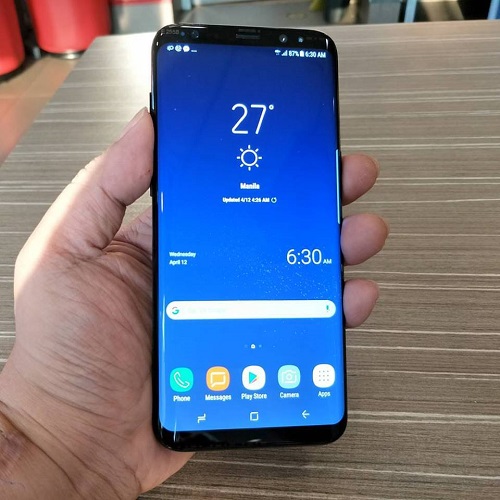
The Samsung Galaxy S8 went through another redesign and made the curved edge permanent. Since there was a demand for larger phones with larger screens, Samsung released two variants – the Galaxy S8 with 5.8″ screen and the Galaxy S8+ with 6.2″. Samsung removed the home button and minimized the bezels, resulting to a large screen display called Infinity Display with an aspect ratio of 18.5:9. The S8 and S8+ started using USB Type-C ports which means they have access to Samsung DeX, a special feature that turns the phone into a mini-computer when docked to a monitor or TV.
The processor used by the S8 and S8+ is the Exynos 8895 Octa-Core processor and storage was 64GB expandable with a memory card and 4GB of RAM. Both phones are equipped with 12 Megapixels with f/1.7 and a front camera with 8 Megapixels also with f/1.7. Battery capacity of the S8 is 3,000 mAh while the S8+ is 3,500 mAh. Android 7.0 Nougat was pre-installed with the phones. The SRP of the Samsung Galaxy S8 in April 2017 was P39,990 while the Galaxy S8+ was priced at P45,990.
The TV commercial I found for the Galaxy S8 and S8+ isn’t funny but it best represents what the current flagship is all about:
SAMSUNG GALAXY S9
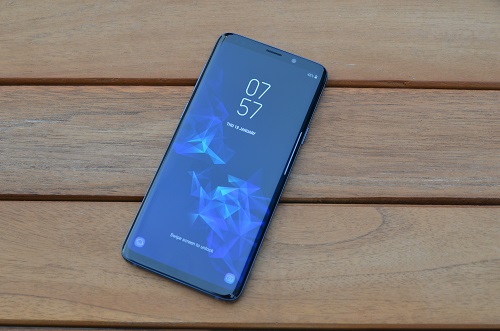
The Samsung Galaxy S9 and S9+ had minor upgrades which honestly speaking weren’t really that exciting. Cameras have the super slow-mo feature and the phone became available in Coral Blue, 2018’s favorite color of smartphones.
Screen display remains the same for the S9 and S9+, and Processor was upgraded to an Exynos 9810 Octa-Core processor. The S9 was only offered with 64GB storage while the S9+ offered 64GB and 128GB. In terms of memory, the S9 still has 4GB of RAM but the S9+ was moved up to 6GB. Cameras were almost similar with the Galaxy S8 but with further improvements in low-light levels (which made it even better.) Likewise with the battery. The phones are pre-installed with Android 8.0 Oreo. The SRP of the Samsung Galaxy S9 in March 2018 was P45,990 while the S9+ cost P52,990 (64GB) and P55,990 (128GB.)
The last ad for the Samsung Galaxy S9 is this:





